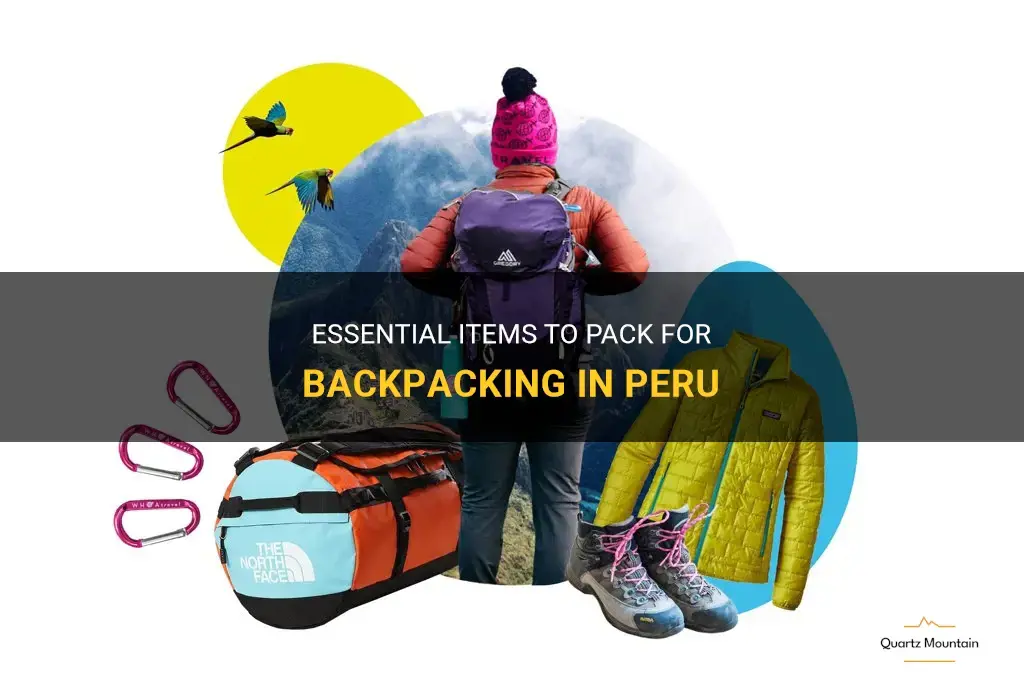
Peru, a country rich in history, culture, and natural beauty, is a dream destination for backpackers looking to embark on an unforgettable adventure. From the mystical ruins of Machu Picchu to the vibrant markets of Cusco, there is so much to explore and discover in this South American gem. However, before you set off on your backpacking journey through Peru, it is essential to pack the right gear and essentials to ensure a smooth and enjoyable trip. In this article, we will explore the essential items that should be on every backpacker's packing list when heading to Peru. So grab your backpack, put on your hiking boots, and let's get ready for an amazing backpacking adventure in Peru!
What You'll Learn
- What are the essential items to pack for backpacking in Peru?
- Are there any specific clothing items that are recommended for backpacking in Peru?
- How should I pack for varying weather conditions in Peru?
- Are there any specific items that are prohibited or restricted when backpacking in Peru?
- What are the must-have items to pack for a hiking trip in the Peruvian mountains?

What are the essential items to pack for backpacking in Peru?
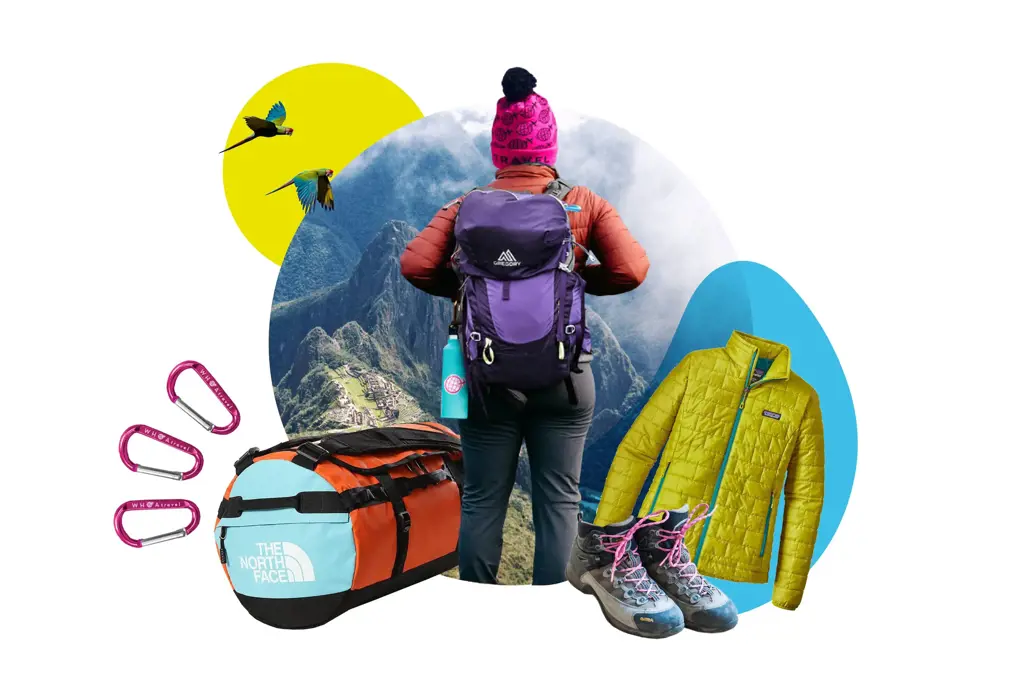
Peru is a popular destination for backpackers due to its stunning landscapes, rich history, and vibrant culture. If you are planning a backpacking trip to Peru, it is essential to pack the right items to ensure a safe and comfortable journey. Here are some essential items to consider when packing for your backpacking adventure in Peru:
- Backpack: A sturdy backpack is a must-have item for any backpacking trip. Look for a backpack that is lightweight, durable, and has sufficient storage space to hold all your belongings. Aim for a backpack with a capacity of around 40-60 liters, as this should provide enough space for your essentials without being too bulky.
- Clothing: Peru has a diverse range of climates, so it is important to pack clothing suitable for various weather conditions. Make sure to bring lightweight and breathable clothing for hot and humid regions like the Amazon rainforest or the coastal areas. Additionally, pack warm layers such as a fleece jacket or a sweater for the chilly highlands and mountainous regions like Cusco and Machu Picchu. Don't forget to include a waterproof jacket or poncho for unexpected rain showers.
- Footwear: Invest in a pair of comfortable and durable hiking boots or trail shoes to navigate Peru's rugged terrain. It is advisable to break in your footwear before your trip to avoid blisters and discomfort. Additionally, pack a pair of lightweight sandals or flip-flops for casual outings or for relaxing at the beach.
- Travel documents: Keep your passport, visa, and any necessary permits or tickets in a waterproof, secure bag or pouch. Make copies of these documents and store them separately as a backup. Carry a sturdy and lightweight wallet or money pouch to keep your cash, credit cards, and identification safe.
- First aid kit: A well-stocked first aid kit is crucial for any backpacking trip. Include basic supplies like adhesive bandages, antiseptic wipes, painkillers, blister pads, and any personal medications you may need. In Peru, it is also advisable to carry medication for altitude sickness if you plan on visiting high-altitude regions.
- Hygiene products: Pack travel-sized toiletries such as shampoo, soap, toothpaste, and a toothbrush. It is also wise to carry hand sanitizer and wet wipes for times when clean water is not readily available. Additionally, include a small towel and a roll of toilet paper in your pack.
- Snacks and water bottle: Carry a refillable water bottle to stay hydrated throughout your journey. It is important to drink plenty of water, especially when hiking at high altitudes. Pack some energy bars, trail mix, or other lightweight snacks to keep you fueled during long hikes or bus rides.
- Electronics and other essentials: Don't forget to bring a universal plug adapter to charge your electronic devices. A reliable headlamp or flashlight can be handy for navigating in low-light conditions. If you plan on trekking in remote areas, consider bringing a portable power bank to keep your devices charged.
Remember to pack light and only bring the essentials as you will be carrying your belongings on your back. Consider the duration of your trip and the availability of laundry services along the way to decide how much clothing to pack. Lastly, be prepared for various weather conditions and take into account the specific activities you plan on doing during your backpacking trip in Peru. Proper planning and packing will help ensure a smooth and enjoyable adventure in this beautiful South American country.
Essential Items to Pack for a Trip to Portugal
You may want to see also

Are there any specific clothing items that are recommended for backpacking in Peru?
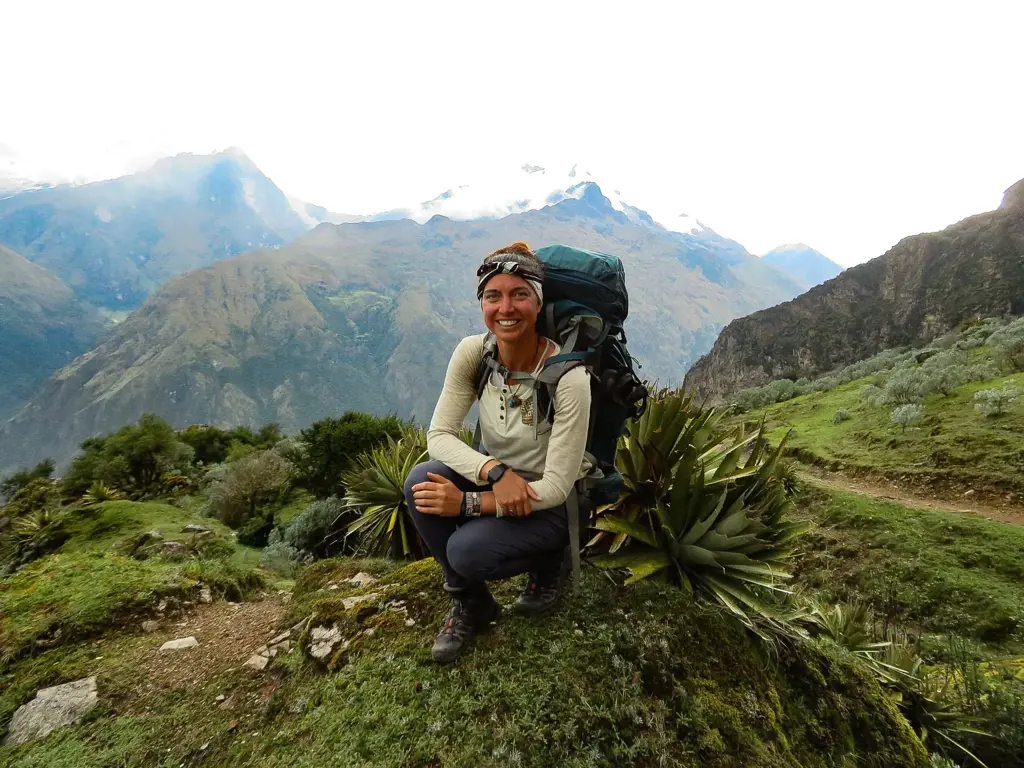
When planning a backpacking trip to Peru, it is important to consider the specific clothing items that will best suit the climate and terrain you will encounter. Peru has diverse landscapes, ranging from high-altitude mountains to tropical rainforests, so it is necessary to come prepared with the right clothing to ensure both comfort and safety during your trip. Here are some recommendations for clothing items to pack for backpacking in Peru.
Layered Clothing:
Peru has a variety of climates, so it is crucial to pack layered clothing to adapt to different weather conditions. Dressing in layers allows you to easily adjust your clothing as temperatures fluctuate throughout the day. For example, if you are trekking in the mountains, you may start your day with cooler temperatures in the morning and experience warmer weather as the day progresses. A good base layer made of moisture-wicking material will help keep you dry and comfortable, while a mid-layer can provide insulation. It is also important to have a lightweight and waterproof outer layer to protect against rain or wind.
Hiking Pants:
When choosing pants for backpacking in Peru, opt for lightweight, quick-drying pants that are comfortable for long hikes. Look for pants made of breathable and durable fabric that can withstand rugged terrains. Convertible pants with zip-off legs are a great option as they can easily be converted into shorts when the weather warms up. Ensure that your pants have enough pockets to conveniently carry small essentials like maps, sunscreen, and snacks.
Long-Sleeved Shirts:
Long-sleeved shirts are essential for protecting your skin from the sun and insects, particularly in more tropical areas like the Amazon rainforest. Choose shirts made of lightweight and moisture-wicking material to keep you cool and dry. It is advisable to go for shirts with built-in UV protection for added sun protection.
Hiking Boots:
Investing in a good pair of hiking boots is crucial for backpacking in Peru, especially if you plan on trekking through mountainous regions or rugged terrains. Look for boots that provide ankle support, are waterproof, and have a sturdy sole for better traction. Make sure to break in your hiking boots before your trip to avoid discomfort and blisters during your trekking adventures.
Hat and Sunglasses:
Protecting yourself from the sun is essential when backpacking in Peru, as the UV rays can be more intense at higher altitudes. A hat with a wide brim or a hat with a neck flap to shield your face and neck from the sun is recommended. Additionally, pack a pair of sunglasses with UV protection to shield your eyes from harsh sunlight and glare.
Insulated Jacket:
Although Peru is not known for extreme cold, temperatures can drop significantly at higher altitudes, especially during the night. It is advisable to pack an insulated jacket to stay warm during chilly evenings or during treks at high altitudes. Look for lightweight and packable jackets that provide good insulation to keep you warm without adding unnecessary weight to your backpack.
These are just a few essential clothing items that are recommended for backpacking in Peru. The key is to pack clothing that is lightweight, moisture-wicking, and versatile enough to adapt to different climates and terrains. Remember to also pack essentials such as socks, underwear, and swimwear depending on the activities and environments you plan to encounter during your trip. It is always best to research the specific region and time of year you will be visiting to ensure you are prepared for the weather conditions you may encounter.
Packing Essentials for a Successful Dance Competition
You may want to see also

How should I pack for varying weather conditions in Peru?
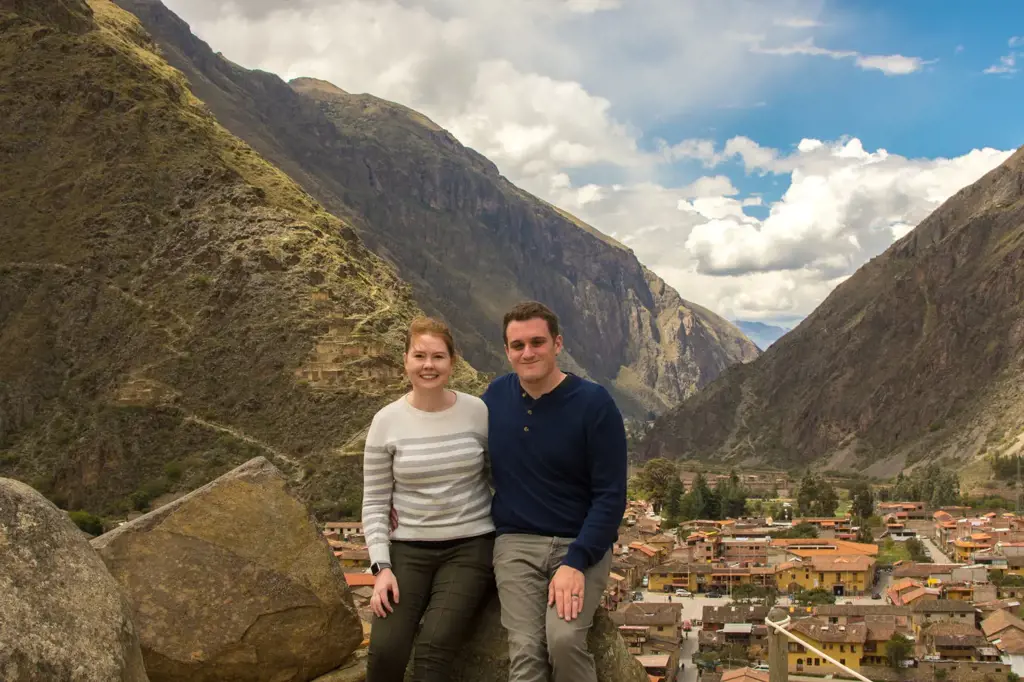
When preparing for a trip to Peru, it is important to remember that the weather can vary significantly depending on the region and time of year. From the coastal deserts to the high mountains and Amazon rainforest, Peru offers a diverse range of climates and temperatures. In order to ensure you are adequately prepared for the changing weather conditions, here are some tips on how to pack for your trip to Peru.
Layering is key:
One of the most important things to remember when packing for Peru is to bring clothing that can be layered. This will allow you to easily adjust to changes in temperature throughout the day. For example, in the coastal areas such as Lima and Paracas, the temperature can be quite warm during the day but become cooler at night. In the highlands such as Cusco and Machu Picchu, the temperature can vary drastically between day and night. By packing lightweight, breathable base layers, as well as a light jacket and a warm sweater or fleece, you will be prepared for any weather conditions you may encounter.
Rain gear:
Peru is also known for its rainy season, particularly in the Amazon rainforest and the higher altitude regions. It is important to pack waterproof clothing to keep you dry during unexpected showers. A good quality rain jacket and waterproof pants are essential, as well as a small umbrella or a poncho. Additionally, pack a waterproof cover for your backpack or use a waterproof backpack to keep your belongings safe and dry.
Sun protection:
Even though Peru may be associated with rain and gloomy weather, the sun can still be quite intense, especially at higher altitudes. It is important to pack sunscreen with a high SPF, a wide-brimmed hat, sunglasses, and lightweight clothing that covers your arms and legs to protect yourself from the sun's harmful rays. Additionally, a good quality pair of hiking boots or sturdy walking shoes is a must for exploring Peru's beautiful landscapes.
Insect protection:
If you are planning to visit the Amazon rainforest or other areas with dense vegetation, it is important to pack insect repellent. Mosquitoes and other insects can be quite prevalent, and it is important to protect yourself from diseases such as malaria and dengue fever. Look for a repellent that contains DEET or another effective insect repellent ingredient and apply it regularly to exposed skin.
Pack for specific activities:
Consider the specific activities you will be undertaking in Peru and pack accordingly. If you are planning on trekking to Machu Picchu or hiking in the Inca Trail, make sure to bring appropriate clothing and footwear. This may include a waterproof backpack, hiking boots with good ankle support, hiking socks, and quick-drying pants. If you plan on visiting the Amazon rainforest, pack lightweight, moisture-wicking clothing that dries quickly, as well as long-sleeved shirts and pants to protect yourself from the bugs and potentially harmful plants.
In conclusion, packing for a trip to Peru requires careful consideration of the varying weather conditions you may encounter. By packing lightweight, versatile clothing that can be layered, as well as rain gear, sun protection, insect repellent, and appropriate footwear, you will be well-prepared for the changing climate and diverse landscapes that Peru has to offer. Remember to also check the weather forecast ahead of time and pack accordingly, while keeping in mind the activities you have planned.
The Ultimate Guide to Packing For the 40 Hour Famine Backpack Challenge
You may want to see also

Are there any specific items that are prohibited or restricted when backpacking in Peru?
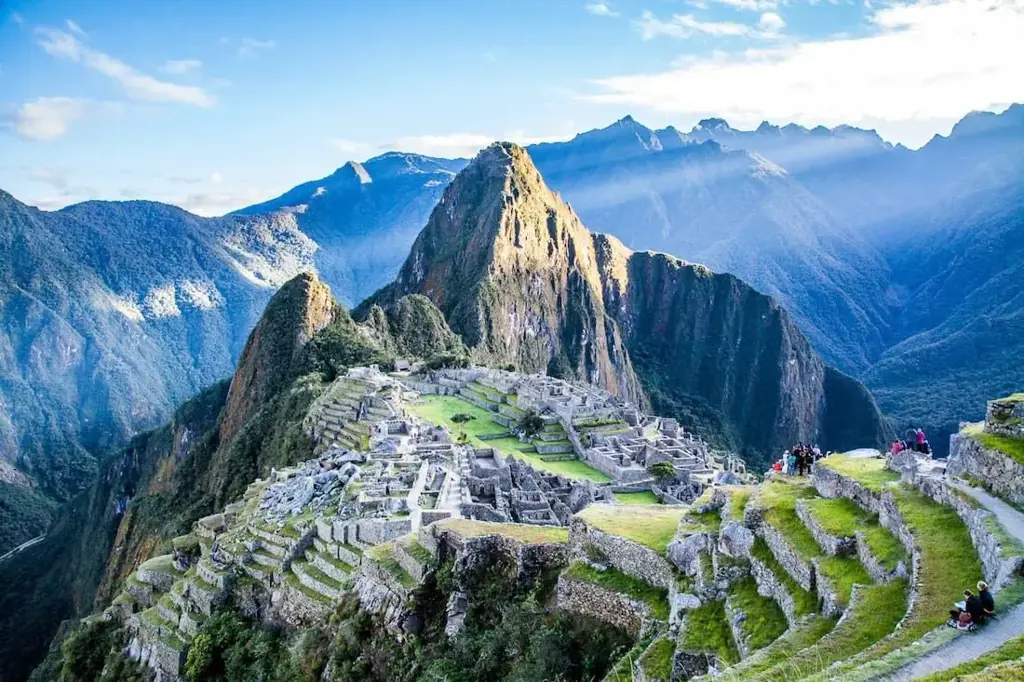
When backpacking in Peru, it's important to be aware of any items that may be prohibited or restricted. This will help ensure a smooth and hassle-free travel experience. While the rules and regulations may vary from one country to another, there are some common items that are generally prohibited or restricted when backpacking in Peru.
Drugs and Narcotics:
Peru has strict drug laws, and it is illegal to possess or transport narcotics or illegal drugs. This includes substances such as cocaine, marijuana, and opium. Penalties for drug offenses can be severe, including lengthy prison sentences.
Endangered Species and Wildlife:
Peru is home to a diverse range of wildlife, some of which are endangered. It is illegal to possess or transport items made from or derived from endangered species. Examples include products made from ivory, pelts, feathers, or bones of protected animals. This includes souvenirs made from animal parts, such as feathered headdresses or turtle shell bracelets.
Cultural Artifacts:
Peru has a rich cultural history, and it is illegal to export or remove cultural artifacts from the country without proper documentation. This includes archaeological artifacts, ancient pottery, textiles, and religious relics. Always ensure that any souvenirs or artifacts you purchase are legally obtained and come with the necessary permits or certificates.
Weapons and Firearms:
Backpackers should not bring firearms, ammunition, explosive devices, or other weapons when traveling in Peru. This includes knives with blades longer than a certain length. Exceptions may be made for individuals with a valid permit, such as law enforcement officers or military personnel.
Counterfeit Goods:
Peru, like many other countries, has strict laws regarding counterfeit goods. It is illegal to buy or sell fake brand-name products, such as designer bags, clothing, or electronics. It is advised to only purchase goods from reputable sources and avoid buying items that appear to be counterfeit.
Traditional Medicines and Plants:
Peru has a rich tradition of herbal medicine and natural remedies. However, certain medicinal plants and traditional medicines may be restricted or prohibited. Always check the regulations and consult with local experts or authorities before bringing any herbal or traditional medicines with you.
When backpacking in Peru, it's important to research and familiarize yourself with the local laws and regulations. This will help ensure that you do not inadvertently bring any prohibited or restricted items with you. It is also advisable to consult with your country's embassy or consulate in Peru for specific travel advisories and guidelines.
Remember, respecting the local laws and culture is essential when traveling to any country. By being aware of the prohibited or restricted items in Peru, you can have a safer and more enjoyable backpacking experience.
The Essential Checklist for Packing for Umrah
You may want to see also

What are the must-have items to pack for a hiking trip in the Peruvian mountains?
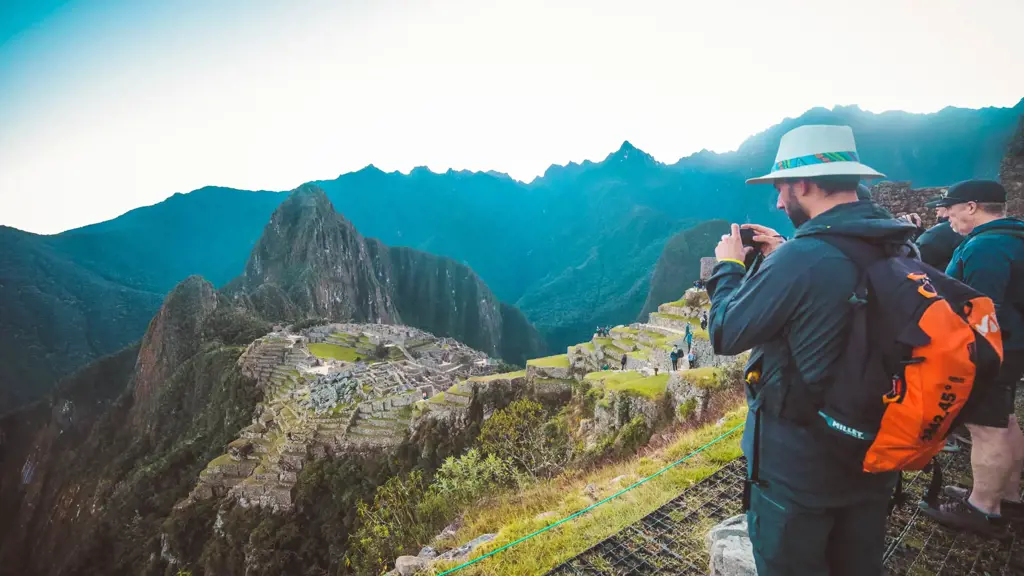
When planning a hiking trip in the Peruvian mountains, it is essential to pack the right gear to ensure a safe and enjoyable experience. The rugged terrain, high altitude, and unpredictable weather conditions make it crucial to be well-prepared. Here are some must-have items to pack for a hiking trip in the Peruvian mountains:
- Proper hiking boots: Invest in a good pair of sturdy hiking boots that provide ankle support and have a rugged sole for traction on slippery rocks and uneven terrain. Make sure to break them in before your trip to avoid blisters and discomfort.
- Lightweight, moisture-wicking clothing: Choose clothing made from lightweight, moisture-wicking materials that will keep you dry and comfortable during the hike. Dress in layers to easily adjust to changing weather conditions, as temperatures can vary greatly in the mountains.
- Warm layers: Even during the summer months, temperatures in the Peruvian mountains can drop significantly, especially at higher altitudes. Pack warm layers such as a fleece jacket or a down jacket to stay warm during chilly nights and early morning hikes.
- Rain gear: Be prepared for rain showers by packing a waterproof jacket and pants. Look for gear that is breathable and lightweight, so you can easily pack it into your backpack when not in use.
- Adequate hydration system: The high altitude and physical exertion of hiking can lead to dehydration. Carry a hydration system such as a water bladder or water bottles to ensure you have access to clean water throughout the hike. It is also advisable to pack water purification tablets in case you need to refill your water from natural sources.
- Sun protection: The strong sun at high altitudes can be intense, even on cloudy days. Pack sunscreen with a high SPF, a wide-brimmed hat, and sunglasses to protect your skin and eyes from harmful UV rays.
- Navigation tools: Make sure to pack a map, compass, and GPS device to navigate the trails confidently. Familiarize yourself with the route before your trip, and have a backup plan in case of any unforeseen circumstances.
- First aid kit: Accidents and injuries can happen, so it is crucial to have a well-stocked first aid kit. Include essentials such as bandages, antiseptic wipes, painkillers, blister treatments, and any necessary prescription medications.
- Snacks and high-energy food: Hiking in the mountains requires a lot of energy, so pack plenty of high-energy snacks such as trail mix, protein bars, and dried fruits. Avoid heavy, perishable foods that may spoil quickly.
- Camping gear: If you plan to camp during your hiking trip, make sure to pack a lightweight tent, sleeping bag, sleeping pad, and cooking utensils. Check the weather forecast beforehand to ensure you have appropriate gear for the expected conditions.
Remember, proper preparation and packing are essential for a safe and enjoyable hiking trip in the Peruvian mountains. By bringing the right gear, you will be ready to tackle the rugged terrain and fully immerse yourself in the stunning landscapes of this beautiful region.
Essential Packing List for a Memorable Trip to Israel in March
You may want to see also
Frequently asked questions
When backpacking in Peru, it's essential to pack a few key items. First and foremost, make sure to bring a sturdy backpack that is comfortable to carry for long periods. Additionally, it is important to pack lightweight and quick-drying clothing suitable for various weather conditions, including both warm and cool temperatures. Don't forget to include a rain jacket or poncho, as Peru is known for its unpredictable weather patterns. Other important items to pack include a good pair of hiking boots, a hat, sunglasses, sunscreen, insect repellent, a reusable water bottle, a first aid kit, a flashlight or headlamp, a power bank to charge electronics, and a travel adapter for charging devices. Don't forget to bring your passport, a copy of your passport, and any necessary travel documents as well.
Peru offers incredible hiking and trekking opportunities, such as the Inca Trail to Machu Picchu or treks in the Cordillera Blanca. When embarking on these adventures, it's important to have the right gear. Essential items for hiking and trekking in Peru include a sturdy and comfortable backpack, a good pair of hiking boots or shoes with ankle support, hiking socks, lightweight and moisture-wicking clothing, layers for various weather conditions, including a warm hat and gloves for high altitudes, a sleeping bag suitable for colder temperatures, a sleeping pad for additional comfort, a headlamp with extra batteries, a water filtration system or water purification tablets, trekking poles for added stability, a reliable and detailed map or guidebook, and a portable camping stove and cookware if camping overnight.
If you plan on visiting high-altitude areas in Peru, such as Cusco, Arequipa, the Sacred Valley, or the Andean mountains, it's important to be prepared for the challenges that come with high elevation. In addition to the general packing list mentioned earlier, there are a few specific items to consider. First, it's crucial to bring medications for altitude sickness, such as acetazolamide (Diamox), which is commonly prescribed for prevention and treatment. It's also advisable to bring altitude sickness prevention aids such as coca leaves, coca candies, or coca tea, which can help alleviate symptoms. Additionally, it's important to stay hydrated, so bring extra water and consider carrying electrolyte powder or tablets to replenish minerals lost through sweating. Lastly, be mindful of the sun at high altitudes, so bring a high SPF sunscreen, lip balm with SPF, a wide-brimmed hat, and sunglasses with good UV protection.







